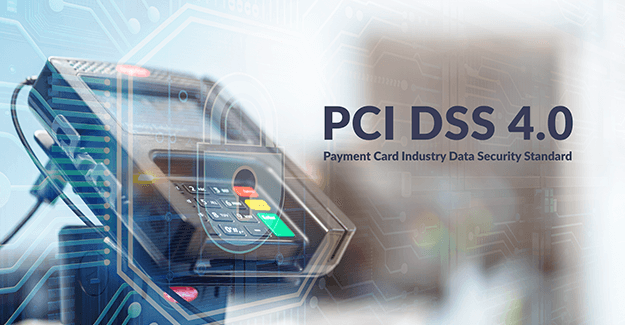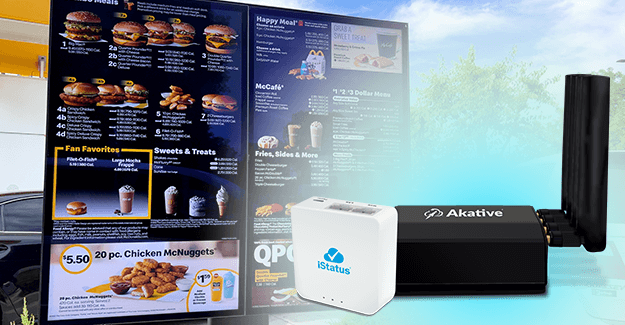Celebrate with Us! Akative's Parent Company Achieves 2025 MSP 500 Prestigious Recognition!
Strengthen Your PCI DSS 4.0 Compliance With iStatus
Post Date:

Increased levels of cyber crime against payment data have driven the PCI DSS 4.0 update, bringing crucial changes to how businesses protect payment information (effective March 31, 2025). This update isn't just about regulatory compliance; it's about building a robust defense against evolving threats. Understanding and implementing these new standards is essential for safeguarding customer trust and preventing potentially devastating data breaches.
Understanding PCI DSS 4.0: Adapting to Modern Threats
PCI DSS 4.0 aims to establish a lasting security foundation, extending beyond compliance to secure customer data and cultivate trust. The new standard emphasizes:
- Continuous Security: Moving away from point-in-time assessments to ongoing monitoring. This is due to the fact that security is a process, not a destination.
- Targeted Risk Analysis: Encouraging proactive identification and mitigation of vulnerabilities. Cyber attacks are constantly changing, and therefore risk analysis must change as well.
- Enhanced Detection and Response: Emphasizing rapid detection and containment of security incidents. The speed of response is critical in today's threat environment.
- Stronger Authentication: Requiring stronger authentication methods to prevent unauthorized access. Passwords alone are no longer enough.
- Increased Flexibility: Allowing businesses to implement security controls that best fit their unique environments, while still meeting the standard's objectives.
How iStatus® Can Bolster Your PCI DSS 4.0 Compliance
While PCI DSS 4.0 can seem daunting, tools like iStatus can significantly streamline your compliance efforts. iStatus is a small, secure IoT device that sits inside your LAN to monitor network connectivity in real-time. It is a feature-rich solution designed to promote business continuity, and its Security Suite, in particular, helps fulfill various PCI DSS 4.0 requirements.
The iStatus Security Suite: Proactive Threat Detection
- iStatus ArpWatch™ (Rogue Device Detection):
PCI DSS 4.0 mandates accurate asset inventories and detection of unauthorized devices. ArpWatch excels at identifying all devices on your LAN, detecting rogue devices and alerting you when it matters most. This strengthens network access control and aids in meeting requirements like 1.2.3, 11.5.2, 12.3, and 12.4. - iStatus ChangeDetection™ (DNS and MITM Attack Detection):
Protecting the integrity of your network is paramount. ChangeDetection monitors for critical network security changes, such as a DNS change or gateway changes that may indicate malicious DNS hijacking and Man in the Middle attacks. With real-time monitoring and alerts, this helps you comply with requirements like 6.4.3 and 11.6, and prevents data interception. - iStatus DDLD™ (Dynamic Data Leak Prevention):
Maintaining network segmentation, a core PCI DSS 4.0 requirement, can become challenging in heterogeneous networks. Additionally, budgetary pressures often force organizations to adopt multi-vendor solutions, further complicating network management and increasing the potential for misconfigurations. In environments where software stacks, firmware updates, and hardware replacements introduce the risk of unintended configuration changes, DDLD acts as an essential safety net.
DDLD detects unauthorized internet access from critical internal systems, alerting to configuration drifts caused by updates or multi-vendor integrations. While it doesn't prevent leaks, it ensures intended segmentation is enforced, especially for PCI DSS 4.0's outbound filtering requirements. DDLD flags unintended network access to restricted targets and detects VLAN or bridge misconfigurations, providing real-time visibility into segmentation integrity. This helps comply with requirements like 1.2.1 and 11.4, even as your network evolves.
Supporting iStatus Features for Enhanced Security and Network Stability
iStatus also provides other useful features to help boost security and overall network performance:
- iStatus NPM™ (Network Performance Monitoring):
While iStatus NPM isn't a direct security tool, it provides critical network intelligence that supports both security and operational stability. Beyond establishing a baseline for normal network activity to detect security anomalies, NPM allows you to monitor network and application performances, such as payment processor APIs. This helps ensure smooth transaction processing and allows for rapid identification of potential disruptions. Furthermore, by providing granular insights into network traffic, NPM enables you to implement proactive solutions like SD-WAN to prioritize crucial traffic, such as payment data, ensuring optimal performance and minimizing downtime. This level of network visibility supports ongoing monitoring requirements and contributes to a robust and resilient payment environment. - iStatus Pinpoint™ (Connectivity Failure Detection):
Ensuring continuous network availability is crucial. Pinpoint quickly identifies the source of internet connectivity failures, reducing downtime and supporting business continuity. This indirectly supports security by ensuring that security devices remain online.
In summary, by leveraging the robust capabilities of iStatus, businesses can proactively address critical PCI DSS 4.0 requirements. Specifically, the iStatus Security Suite provides real-time monitoring and threat detection, significantly strengthening your compliance efforts. Ultimately, this leads to an enhanced overall security posture which safeguards sensitive cardholder data and fosters customer trust.

